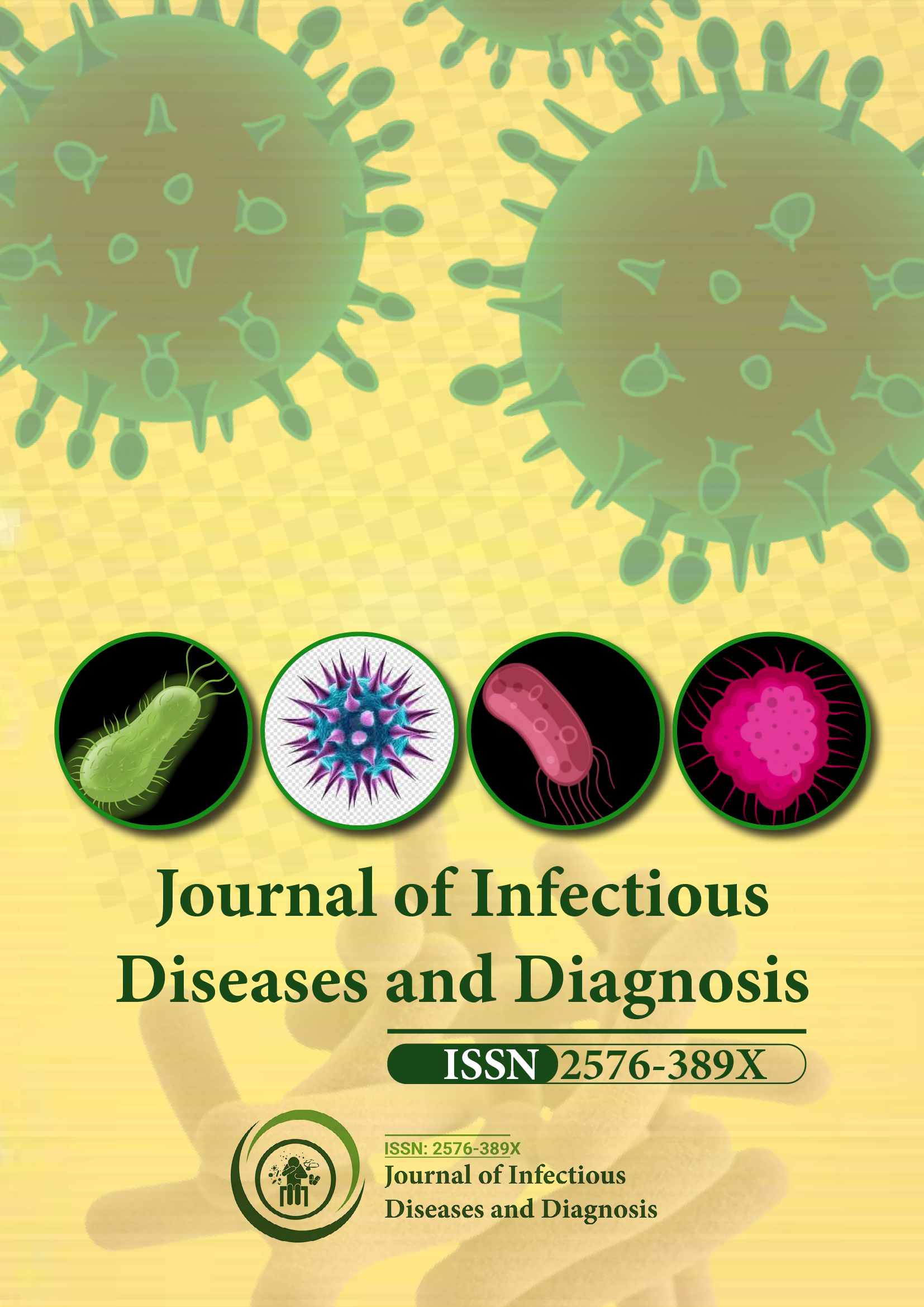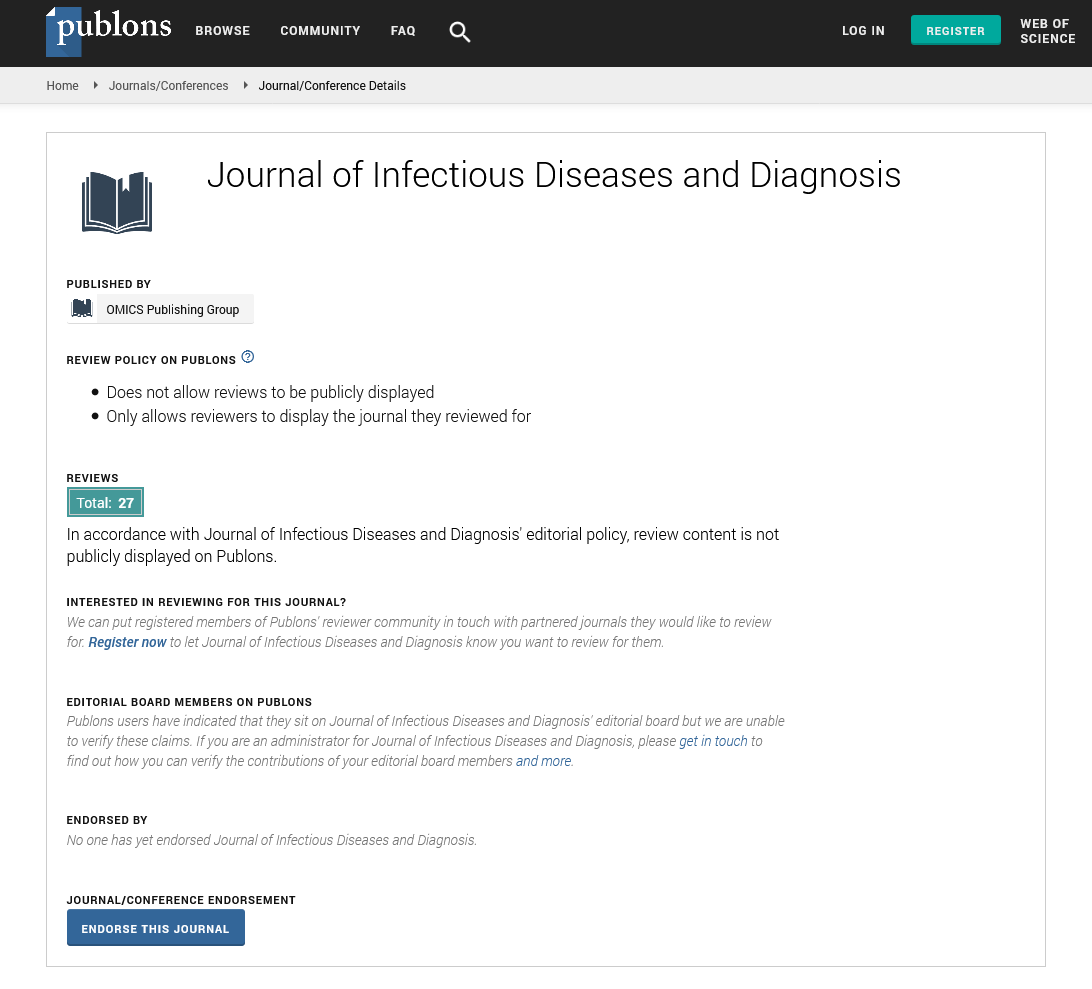Indexed In
- RefSeek
- Hamdard University
- EBSCO A-Z
- Publons
- Euro Pub
- Google Scholar
Useful Links
Share This Page
Journal Flyer

Open Access Journals
- Agri and Aquaculture
- Biochemistry
- Bioinformatics & Systems Biology
- Business & Management
- Chemistry
- Clinical Sciences
- Engineering
- Food & Nutrition
- General Science
- Genetics & Molecular Biology
- Immunology & Microbiology
- Medical Sciences
- Neuroscience & Psychology
- Nursing & Health Care
- Pharmaceutical Sciences
Opinion Article - (2025) Volume 10, Issue 2
Kidney Infections: Understanding Causes, Recognizing Symptoms and Exploring Effective Treatment Strategies
Leon Minerva*Received: 25-Feb-2025, Manuscript No. JIDD-25-28671; Editor assigned: 27-Feb-2025, Pre QC No. JIDD-25-28671 (PQ); Reviewed: 14-Mar-2025, QC No. JIDD-25-28671; Revised: 21-Mar-2025, Manuscript No. JIDD-25-28671 (R); Published: 28-Mar-2025, DOI: 10.35248/2576-389X.25.10.325
Description
A kidney infection, medically referred to as pyelonephritis, is a type of Urinary Tract Infection (UTI) that affects one or both kidneys. This condition can arise when bacteria enter the urinary tract and travel up to the kidneys, leading to inflammation and discomfort. While kidney infections can affect anyone, they are more common in women, individuals with weakened immune systems, or those with anatomical abnormalities of the urinary system.
Causes and risk factors
The primary cause of a kidney infection is bacterial invasion, with Escherichia coli (E. coli) being the most common culprit. These bacteria typically originate in the digestive tract and enter the urinary system through the urethra. If untreated, the infection can ascend to the bladder and eventually reach the kidneys.
Several factors can increase the likelihood of developing a kidney infection:
Urinary retention: When the bladder does not empty fully, it provides a favorable environment for bacteria to multiply.
Urinary tract obstruction: Kidney stones, enlarged prostate glands, or structural issues can hinder the flow of urine.
Recurrent bladder infections: Repeated infections lower the body’s defenses against ascending bacteria.
Weakened immune response: Individuals with diabetes, HIV/ AIDS, or those undergoing chemotherapy are more susceptible.
Use of urinary catheters: These medical devices can introduce bacteria into the urinary tract.
Signs and symptoms
Symptoms of a kidney infection often begin suddenly and may worsen quickly. Common signs include: Fever and chills, pain in the lower back or side, fatigure, frequent and painful urination, Nausea and vomiting.
In some cases, especially among the elderly or those with compromised health, symptoms may be subtle or atypical. Mental confusion or general weakness might be the only indications in such groups.
Diagnosis
Diagnosis begins with a thorough medical history and physical examination. Laboratory tests play an essential role in identifying the infection:
Urinalysis: Detects bacteria, white blood cells and other markers of infection.
Urine culture: Identifies the specific type of bacteria and determines which antibiotics are effective.
Blood tests: Check for signs of infection in the bloodstream.
Imaging: Ultrasound or CT scans may be used in recurrent or severe cases to detect obstructions, abscesses, or anatomical anomalies.
Treatment
Treatment of kidney infection typically involves antibiotic therapy. The choice and duration of antibiotics depend on the severity of the infection and the individual's health status. For uncomplicated cases, oral antibiotics for 7 to 14 days are often sufficient. However, for more severe infections or individuals unable to take oral medications, intravenous antibiotics in a hospital setting may be required.
It is important to complete the full course of antibiotics, even if symptoms improve before the medication is finished. Stopping treatment early can lead to recurrence or antibiotic resistance.
Potential complications
If not addressed promptly, kidney infections can lead to serious health issues:
Kidney damage: Persistent or repeated infections can scar kidney tissue and impair function.
Sepsis: Bacteria from the kidneys can enter the bloodstream, causing a widespread infection that is potentially lifethreatening.
Renal abscess: A collection of pus may form in or around the kidney, often requiring drainage.
Prevention
Preventive measures can help reduce the chances of developing a kidney infection:
• Drink plenty of fluids, especially water, to keep urine diluted and bacteria flushed out.
• Urinate frequently and avoid holding urine for extended periods.
• Maintain proper hygiene and wiping from front to back after using the toilet prevents bacteria from spreading from the anus to the urethra.
• Urinate after intercourse to remove any bacteria introduced during sexual activity.
• Avoid irritating feminine products, such as douches or powders, that can disturb the natural balance of bacteria in the genital area.
For individuals with recurrent kidney infections, healthcare providers may recommend further testing or low-dose, long-term antibiotics as a preventive measure.
Conclusion
Kidney infections are a serious form of urinary tract infection that require prompt diagnosis and appropriate treatment. While most cases respond well to antibiotics and self-care, delays in seeking medical help can lead to more complex health problems. Awareness of the symptoms, risk factors and prevention methods can support better outcomes and reduce the chances of recurrence. With proper attention, individuals can recover fully and maintain healthy kidney function.
Citation: Minerva L (2025). Kidney Infections: Understanding Causes, Recognizing Symptoms and Exploring Effective Treatment Strategies. J Infect Dis Diagn. 10:325.
Copyright: © 2025 Minerva L. This is an open-access article distributed under the terms of the Creative Commons Attribution License, which permits unrestricted use, distribution and reproduction in any medium, provided the original author and source are credited.

